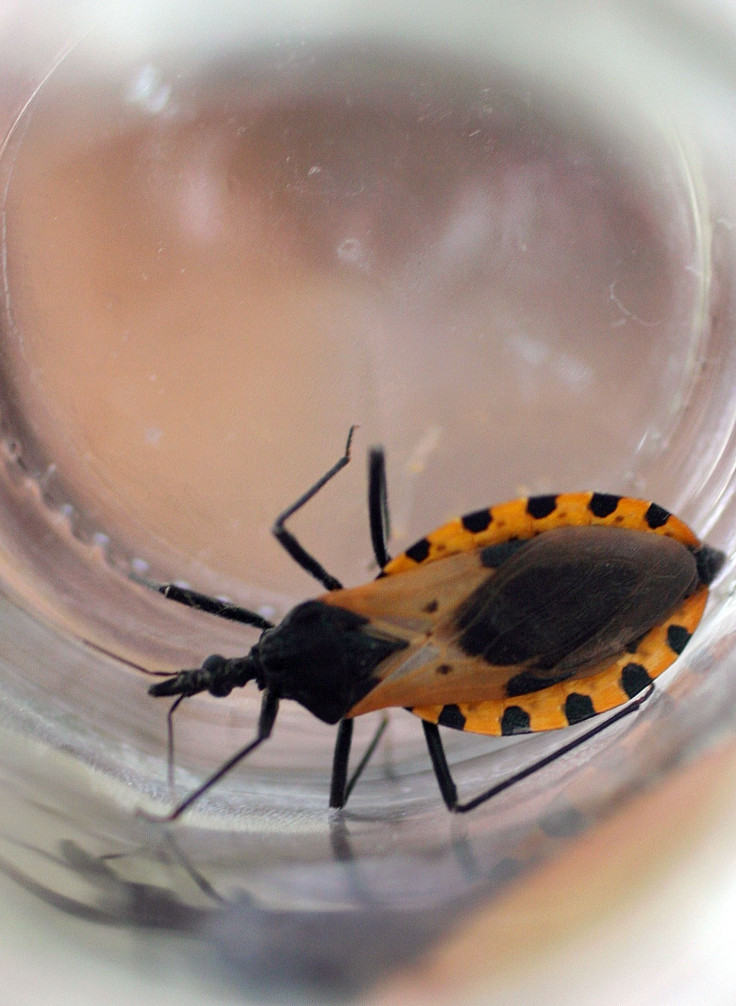What Are Kissing Bugs? Chagas Disease-Causing Insects Infected 300,000 In US

The “kissing bugs,” also known as the triatomines, are becoming increasingly common in the southern states of the United States, according to a report released by the American Heart Association a week ago. These insects transmit a deadly parasite called Trypanosoma cruzi, which can cause the Chagas disease.
“Chagas disease, caused by infection with a parasite called Trypanosoma cruzi (T cruzi), causes chronic heart disease in about one-third of those infected. Over the past 40 years, Chagas disease has spread to areas where it had not traditionally been seen, including the United States,” the report noted.
Although the bug was more commonly found in Central and South America, affecting at least 8 million people in those areas, according to Centers for Disease Control and Prevention's (CDC) report published in December 2017, it infected 300,000 people in the U.S.
Here are some facts about the kissing bug:
1. The bug gets its name because it typically bites human beings on their faces. It then proceeds to defecate on the open wound, releasing the harmful parasites along with it. When a person scratches at the open wound afterward, he or she unknowingly pushes the parasites into the open wound and eventually into the body. Rarely does a person get infected through consuming food that has been contaminated by the bug.
2. Kissing bugs are mostly found in damp, enclosed spaces such as underneath porches, between rocky structures, under concrete blocks, in rock, wood, brush piles, or beneath tree barks, inside rodent nests or animal burrows, in outdoor dog houses or kennels and in chicken coops or houses.
3. Places where the bugs take shelter can be sprayed with pyrethrin sprays that have been found effective in eliminating infestations around homes and outbuildings.
4. If you happen to encounter the kissing bug, it is always best to avoid bodily contact with the insect. If you have successfully trapped the insect in a plastic or glass container, you can either fill the container with alcohol or freeze it, before taking it to your area health department or university lab for proper identification.
5. This is because kissing bugs are often mistaken with other look-alikes which do not feed on humans. For example, wheel bug, the western corsair and leaf-footed bug all resemble the kissing bug.
Chagas disease symptoms:
The T cruzi is sometimes called the "silent killer" because many people who get infected by the parasite don't show any symptoms right away, even though acute Chagas disease occurs immediately after infection.
Although the parasites may circulate inside the bloodstream for up to weeks or months, in most cases the infection is mild or asymptomatic. The infected person may develop a fever and/or swelling around the wound left by the bug’s bite. Very rare, during the acute phase, does the person experience inflammation of the heart muscle or the brain and lining around the brain.
“Early detection of Chagas disease is critical, allowing prompt initiation of therapy when the evidence for cure is strong,” Caryn Bern, professor of epidemiology and biostatistics at the University of California in San Francisco, warned in an online statement.
Following the acute phase of the disease, the infected person enters the chronic indeterminate phase, where he or she is unaware of the infection and no traces of the parasites are found in the blood. CDC estimated, while 20 to 30 percent of the infected people develop debilitating and sometimes life-threatening chronic medical problems over the course of their lives, others never display Chagas-related health complications.
Some of the chronic health problems that people battling Chagas disease face are abnormal heartbeats that can cause sudden death, a dilated heart that fails to pump blood properly, and a dilated esophagus or colon, leading to difficulties with eating or passing stool.
© Copyright IBTimes 2025. All rights reserved.






















